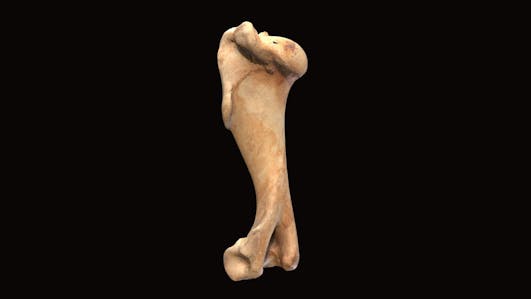horses humerus info...

The humerus is one of the long bones in a horse's forelimb, equivalent to the upper arm bone in humans. Here are five key pieces of information about a horse's humerus:
- Anatomy:
The humerus is the largest bone in the horse's forelimb, extending from the shoulder (proximal end) to the elbow (distal end). It is situated between the scapula (shoulder blade) and the radius and ulna (forearm bones).
- Function:
The humerus is a critical structural component of the horse's forelimb, providing support and facilitating various movements, including flexion and extension of the elbow. It is involved in weight-bearing and locomotion.
- Injuries:
The humerus can be susceptible to injuries, such as fractures, which can result from traumatic events, overexertion, or other factors. Humerus fractures can cause severe lameness and pain in the affected limb and may require veterinary intervention.
- Veterinary Care:
If a horse displays lameness in a front limb and there is suspicion of a humerus injury, a veterinarian should be consulted for a thorough examination and diagnosis. Diagnostic tools like X-rays may be used to assess the condition of the bone.
- Treatment and Rehabilitation:
The treatment for a humerus injury depends on the location and severity of the fracture. It may involve rest, immobilization, or surgical repair. After treatment, a rehabilitation plan is often necessary to help the horse regain strength and mobility in the affected limb.
Maintaining the health of the humerus and the entire forelimb is essential for a horse's overall well-being and performance. Regular veterinary care, preventive measures, and early intervention in case of injuries are crucial for keeping a horse's forelimbs in good condition.



